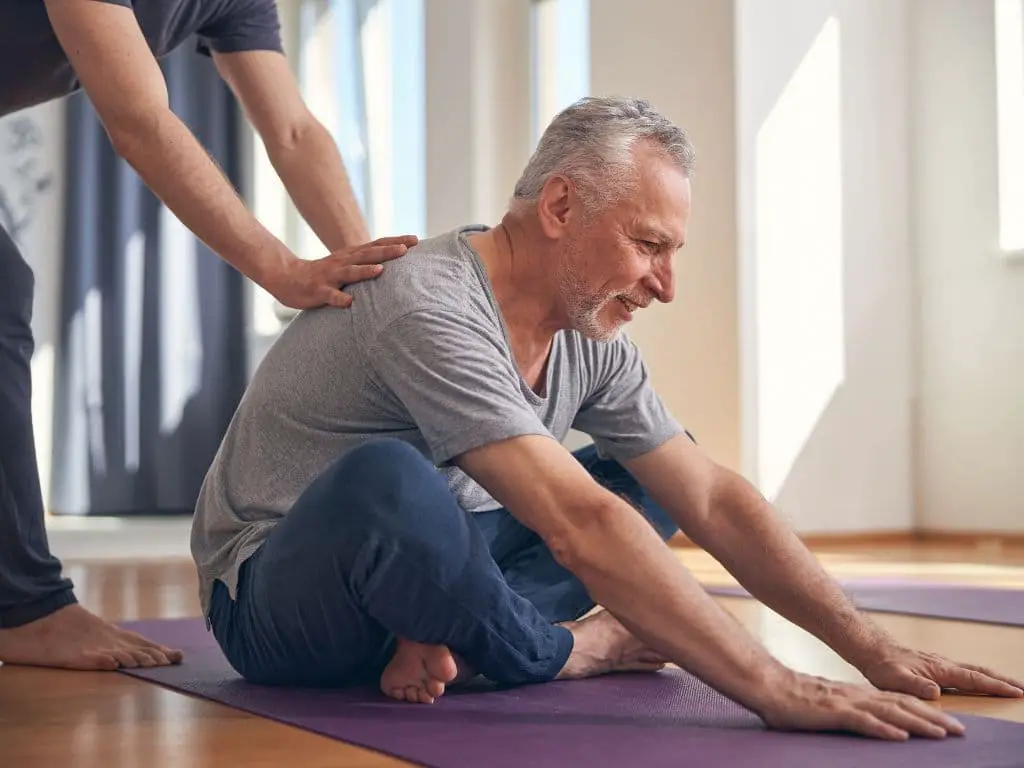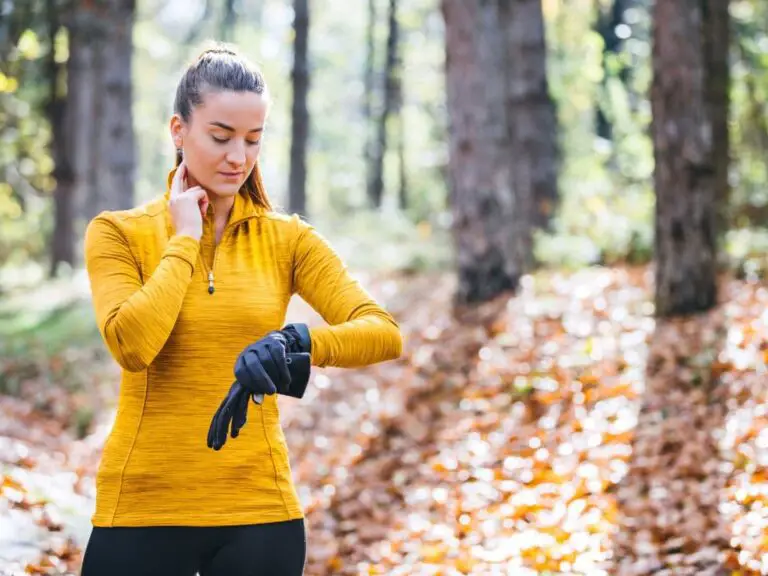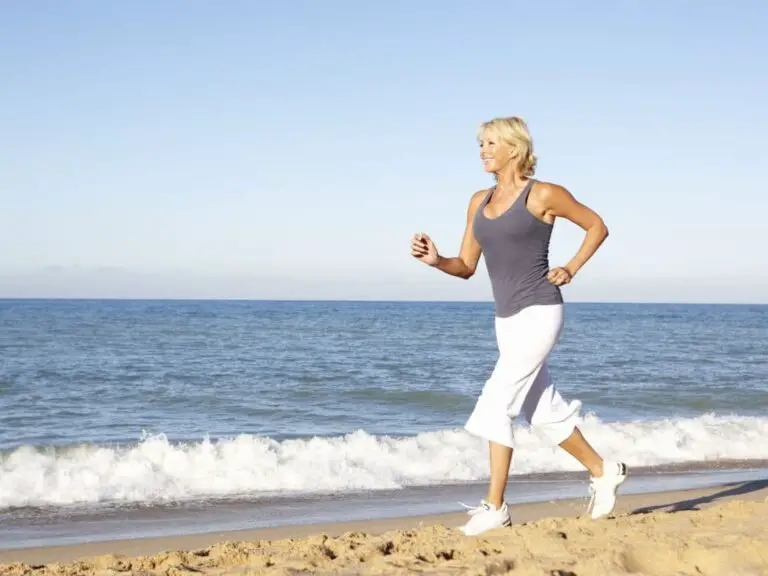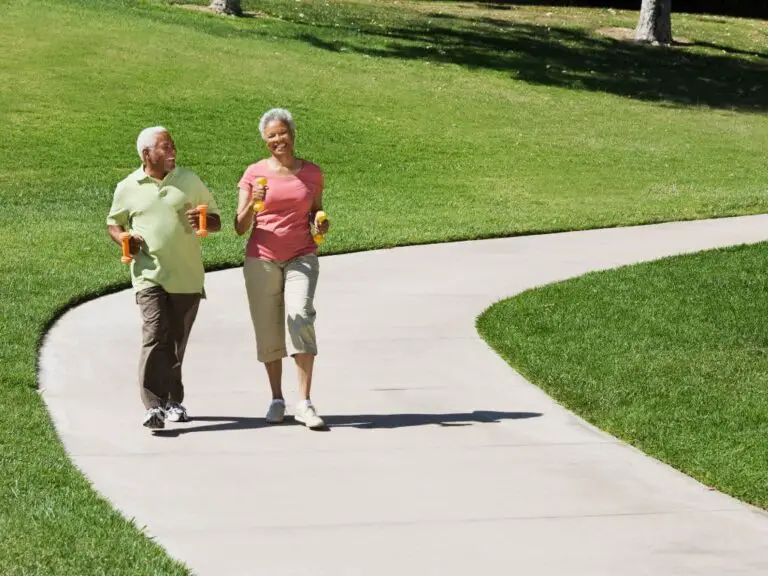How Can I Lift My Butt While Sitting?
As we age, maintaining strength and mobility becomes increasingly important for preserving our health and quality of life. One area that many seniors overlook is the gluteal muscles (or buttocks) – keeping these muscles active can provide significant benefits. Lifting and engaging your glutes while sitting down can help improve posture, activate your core, and prevent a flat, sagging posterior.
Lifting your butt while sitting involves consciously engaging and contracting your gluteal muscles. This can be achieved through exercises such as glute squeezes, seated marching, seated leg lifts, and bent-knee kickbacks. Regularly performing these exercises improves posture, strengthens muscles, prevents muscle atrophy, and helps maintain a lifted and toned butt. Proper form, consistent practice, and incorporating these exercises into daily routines can maximize effectiveness.
In this article we will explore how seniors can lift their buttocks while seated, the advantages this provides, and exercises that target this area. By consciously using the glutes during everyday activities, seniors can boost their fitness and preserve that youthful shape.

What are the Benefits of Lifting Your Butt While Sitting?
Lifting and squeezing your glutes while sitting down engages the core muscles, improves alignment, and works the buttocks. This has several advantages for seniors:
- Enhances posture – Activating the glutes helps straighten the spine, alleviating slouching. This takes pressure off the lower back.
- Prevents atrophy – The glutes are prone to wasting if unused. Regularly contracting them maintains shape and tone.
- Strengthens muscles – Working the gluteal muscles will increasestrength over time. This aids mobility, balance and stability.
- Reduces pain – Using the glutes properly can relieve lower back, hip and knee pain by correcting posture.
- Boosts metabolism – Engaging the large glute muscles burns caloriesand helps manage weight.
In short, activating your glutes when sitting protects the back, shapes the rear, builds strength and aids in healthy aging. Making it a habit will maximizethese gains.
How Does Sitting Down Make Your Butt Flat and How Can This be Prevented?
Sitting for extended periods can weaken and flatten the gluteal muscles over time. Here’s how and how it can be avoided:
- Inactivity – Long periods of sitting allow the glutes to remain dormant. Lack of use leads them to become soft and flat.
- Poor posture – Slouching and slumping on the sit bones shortens the glutes, preventing full contraction.
- Loss of tone – Disuse of glute muscles leads to reduced shape and definition. The rear appears saggy.
- Muscle wasting – Lack of activation weakens and atrophies the glutes. This causes a flat, pancake appearance.
To help avoid this:
- Sit actively – Consciously contract the glutes for a few seconds every 5-10 minutes when sitting.
- Maintain posture – Sit tall with a neutral pelvis to allow full glute activation.
- Take breaks – Get up and walk around periodically to reactivate the muscles.
- Exercise – Do targeted moves like bridges, squats and lunges to strengthen glutes.
Keeping the butt engaged while sitting and doing focused training preserves that youthful lift. Making glute activation part of your daily routine is key.
What are Some Exercises That Can Help Seniors Lift Their Butt While Sitting?
The following exercises are simple yet effective for seniors to lift and tonetheir glutes. They can be done daily to help activate the muscles while sitting.
Glute Squeeze
- Sit tall near the front of the chair. Feet flat on floor.
- Tighten glutes as if pinching a coin between your cheeks.
- Hold for 3-5 seconds, relax, and repeat 10-15 times.
Seated Marching
- Sitting up straight, lift one knee up like marching.
- Squeeze glutes as you lift the leg.
- Alternate legs, completing 10 reps on each side.
Seated Leg Lifts
- Sit upright, holding chair for balance.
- Lift one leg straight out to the side, engaging the glute.
- Slowly lower leg after a 3 count. Do 10 reps each side.
Bent-Knee Kickbacks
- Sitting tall, bring one knee to your chest.
- Kick leg back, squeezing glute. Hold for 2 counts.
- Complete 10-12 controlled reps on each side.
Be sure to maintain upright posture during these exercises, and do them consistently for best results. Start with 3 sets twice a day.
How Often Should Seniors Do These Exercises to Keep Their Butt in Shape?
To reap the posture and toning benefits, seniors should engage in targeted glute exercises and activation at least 3-4 times per week. Here are some guidelines:
- Do 10-15 reps of each exercise, 2-3 sets per session.
- Squeeze glutes for 3-5 seconds during each rep. This maximizes activation.
- Include exercises in daily routine – e.g. every morning, while watching TV, etc.
- Perform a variety of moves like bridges, clamshells, and donkey kicks to work all glute muscles.
- Increase reps or sets over time as muscles get stronger. But start slowly.
- Rotate through different glute exercises from one session to the next.
- Monitor for improvement in posture, strength, and shape after 2-3 weeks.
- Rest at least one day between strength sessions to allow recovery.
Staying consistent with glute activation is key for maintaining a strong, lifted rear as you age. But be sure to pace yourself.
How Can Seniors Improve Their Posture and Sit Up Straight?
Sitting with proper posture allows seniors to engage their glutes more effectively while seated. Here are some tips:
- Align ears, shoulders, hips, knees and ankles. Use proper chair height.
- Draw shoulders back and down, keeping chest open.
- Maintain neutral pelvic tilt with a small arch in lower back.
- Sit near front of chair so knees are at or below hips.
- Keep feet flat on floor about hip-width apart for balance.
- Strengthen core and back muscles to aid posture.
- Use small pillows behind lower back or lumbar as needed for support.
- Take frequent breaks from sitting. Walk around and re-align positionoften.
- Be mindful of posture throughout the day during all activities.
- Do chest-opening exercises like seated rows to counteract hunching.
With practice, proper spinal alignment will become more habitual. Cueing glute squeezes while sitting up tall will further help engage the muscles.
How Can Seniors Stay Motivated to Get in Shape and Age Gracefully?
Here are some proven strategies seniors can use to stay driven to lift their glutes and achieve fitness goals:
- Set specific, achievable goals like doing 10 reps of bridges without fatigue.
- Track progress with photos, measurements, or workout logs. See weekly improvements.
- Find an accountability partner who can help you stay on track.
- Set reminders on your phone, watch, or calendar for workouts.
- Reward yourself after reaching milestones – treat yourself to a massage or fun activity.
- Prioritize self-care. Make your health a top priority.
- Focus on consistency, not perfection. Doing something is better than nothing.
- Vary your routine to prevent boredom. Take a dance class or try a new sport.
- Feel good about positive changes in your strength, mobility, and energy.
Small successes build habits. By staying focused on your fitness gains, getting in shape and lifting your glutes will become rewarding and self-motivating.
What are Some Common Mistakes Seniors Should Avoid When Trying to Lift Their Butt While Sitting?
When starting a new exercise regimen, improper form is common. Here are some mistakes to avoid:
- Arching lower back excessively – keep neutral spine alignment.
- Gripping glutes for too long – avoid fatigue and injury.
- Holding breath during reps – breathe normally.
- Overdoing it too soon – start with low reps and increase gradually.
- Skipping rest days – recovery prevents injury and burnout.
- Ignoring pain – stop if exercises cause discomfort.
- Doing reps too quickly – control motion for maximum effectiveness.
- Not engaging core – brace abdominals during each rep.
- Forgetting glute squeezes during routine activities.
- Doing too much too soon before building proper foundation.
Start slowly, learn proper form, and build up gradually. Be patient and celebrate small milestones. Proper technique gives the best results.
What are the Risks of Not Lifting the Butt While Sitting for Seniors?
Failing to actively engage the gluteal muscles can have consequences. Potential risks include:
- Poor posture – Weak glutes allow slouching and spine misalignment.
- Loss of mobility – Glute strength aids everyday movement like standing and walking.
- Increased fall risk – Weakened muscles Impair balance and stability.
- Back pain – Glutes support the spine and pelvis. Weakness strains the back.
- Arthritis worsening – Poor pelvic and hip alignment adds stress to joints.
- Depression – Isolation and reduced self-confidence from loss of independence.
- Obesity – Inactivity coupled with slower metabolism.
Maintaining glute strength is crucial for preserving function, keeping the back healthy, reducing pain, supporting joints, and retaining mobility through the senior years and beyond.
Conclusion
Actively engaging the gluteal muscles while sitting down provides tremendous benefits for seniors. By squeezing, lifting and contracting the glutes whenever sitting, seniors can improve posture, strengthen the lower body, and maintain a youthful, toned shape.
Including targeted exercises that activate the glutes in your daily routine – along with proper form, pacing, and consistency – is the recipe for successfully lifting your butt as you age. With regular practice, seniors will gain mobility, confidence, and quality of life.
Frequently Asked Questions
-
Why do older women’s stomachs get big?
Even though they don’t gain weight, many women notice an increase of belly fat. The decrease in estrogen may be responsible for this increase. This could influence the distribution of fat throughout the body.
-
How can I lift my butt while sitting?
Squeezing your gluteal muscles while sitting is the best way to exercise your buttocks. You will notice your hips rotating slightly and your back end will squeeze in as you press your gluteal muscles. Repeating the exercise is necessary to make this an efficient one.
-
What age is considered the prime of your life?
The highest percentage of people in the 25-31 age range and the 32-39 range say that they are at their peak in terms of overall well-being (58% and 57%, respectively). However, the 25-31 age group is more fortunate than 32-39-year-olds (13%) who say that they have reached their peak.
-
Does sitting position affect belly fat?
The researchers found that people who sat more during the day had more abdominal and visceral fat, along with more fat around the liver.
-
Why do old people sleep so much?
Excessive daytime sleepiness in older adults is a sign that there may be an underlying condition. An older adult’s excessive daytime sleepiness could be due to sleep apnea or cognitive impairment.
-
Is Gatorade Good for elderly?
If your senior needs immediate electrolytes, it’s okay. Sugary beverages like Gatorade, however, are not recommended for diabetics or other people with serious health conditions.
-
How far should a 74 year old walk each day?
According to a study in The International Journal of Behavioral Nutrition and Physical Activity, the daily step count for an average older person is between 2,000 and 9,000.
-
Are chair workouts effective?
You can stay active by sitting down, with just a chair. Chair exercises that are low-impact can increase your movement and reduce pressure on your joints.
-
How do I activate my butt while sitting?
Sit down at your computer and squeeze your glute muscles hard. You should hold the squeeze for at least 10 seconds. Then, rest your hands for 30 seconds. This can be repeated 10 more times throughout the day.
-
What is the best exercise for 70 year old woman?
Aerobic exercise is important for seniors. They need to get at least 2 hours of exercise each week, such as brisk walking. This is about 30 minutes most days. Walking, dancing and tennis are endurance exercises that improve your energy, breathing and heart rate.







